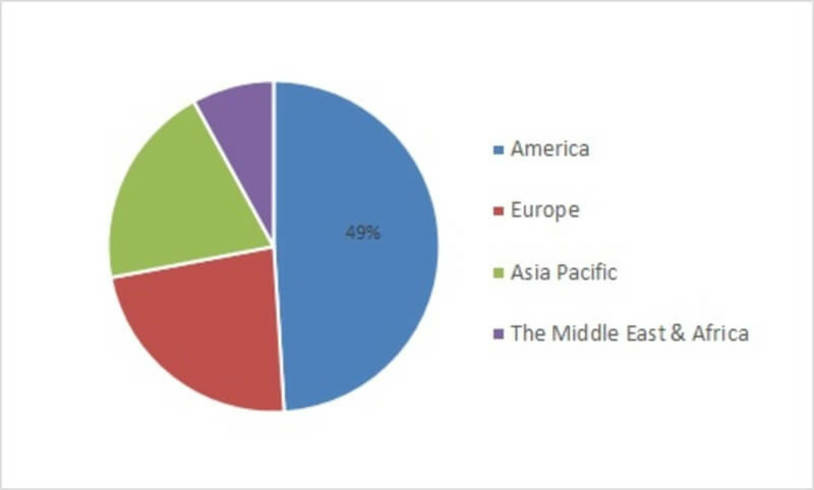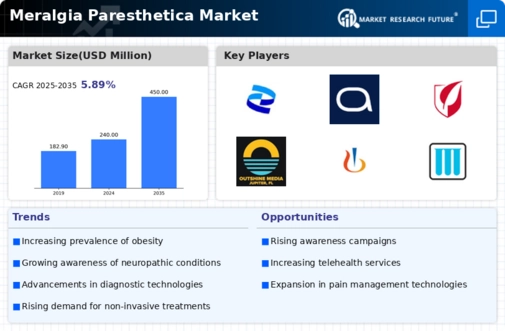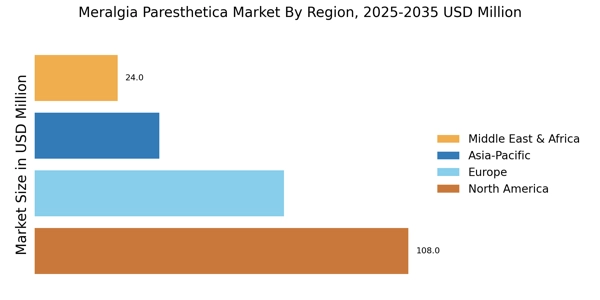Increased Focus on Patient Education
An increased focus on patient education is emerging as a vital driver in the Meralgia Paresthetica Market. Healthcare providers are recognizing the importance of educating patients about the condition, its causes, and available treatment options. This emphasis on education is likely to empower patients to seek timely medical attention, thereby increasing the number of diagnosed cases. Furthermore, educational initiatives can lead to better patient adherence to treatment plans, which may improve overall outcomes. As awareness campaigns and educational resources become more prevalent, the market is expected to benefit from a more informed patient population. This trend not only enhances the quality of care but also contributes to the overall growth of the Meralgia Paresthetica Market by fostering a proactive approach to managing the condition.
Expansion of Healthcare Infrastructure
The expansion of healthcare infrastructure is a significant driver in the Meralgia Paresthetica Market. As healthcare systems evolve and expand, access to specialized care for conditions like Meralgia Paresthetica Market improves. This expansion includes the establishment of pain management clinics, rehabilitation centers, and outpatient services that cater specifically to patients suffering from nerve-related conditions. Enhanced infrastructure facilitates timely diagnosis and treatment, which is crucial for effective management of symptoms. Market data suggests that regions with robust healthcare systems are witnessing higher rates of diagnosis and treatment for Meralgia Paresthetica Market, indicating a correlation between infrastructure development and market growth. As healthcare facilities continue to expand and improve, the Meralgia Paresthetica Market is likely to experience sustained growth driven by increased patient access to care.
Technological Advancements in Treatment
Technological advancements in treatment options are significantly influencing the Meralgia Paresthetica Market. Innovations such as minimally invasive surgical techniques, radiofrequency ablation, and neuromodulation therapies are emerging as effective solutions for managing symptoms. These advancements not only enhance patient outcomes but also reduce recovery times, making them appealing to both patients and healthcare providers. The market is witnessing a shift towards these advanced treatment modalities, which are expected to capture a larger share of the market. Furthermore, the integration of artificial intelligence in diagnostic tools is likely to improve the accuracy of diagnoses, leading to timely interventions. As these technologies continue to evolve, they are anticipated to drive market growth by offering patients more effective and less invasive options for managing Meralgia Paresthetica Market.
Growing Demand for Non-Invasive Therapies
The growing demand for non-invasive therapies is a critical driver in the Meralgia Paresthetica Market. Patients increasingly prefer treatment options that do not require surgical intervention, leading to a rise in the popularity of physical therapy, chiropractic care, and pharmacological treatments. This trend is supported by a shift in patient attitudes towards healthcare, where individuals seek to avoid the risks associated with surgery. Market data indicates that non-invasive therapies are projected to account for a significant portion of the market share, as they align with patient preferences for safer and more conservative treatment approaches. Additionally, the increasing availability of these therapies through various healthcare settings is likely to further stimulate market growth, as more patients gain access to effective non-invasive options for managing their symptoms.
Rising Incidence of Meralgia Paresthetica
The rising incidence of Meralgia Paresthetica Market is a notable driver in the Meralgia Paresthetica Market. Factors such as obesity, diabetes, and sedentary lifestyles contribute to the increasing prevalence of this condition. According to recent data, the incidence rate has shown a steady increase, with estimates suggesting that approximately 4% of the population may experience symptoms at some point in their lives. This growing patient population necessitates enhanced diagnostic and treatment options, thereby propelling the market forward. As awareness of the condition expands, healthcare providers are more likely to recognize and diagnose Meralgia Paresthetica Market, leading to increased demand for therapeutic interventions. Consequently, the market is poised for growth as more individuals seek relief from the discomfort associated with this condition.


















Leave a Comment